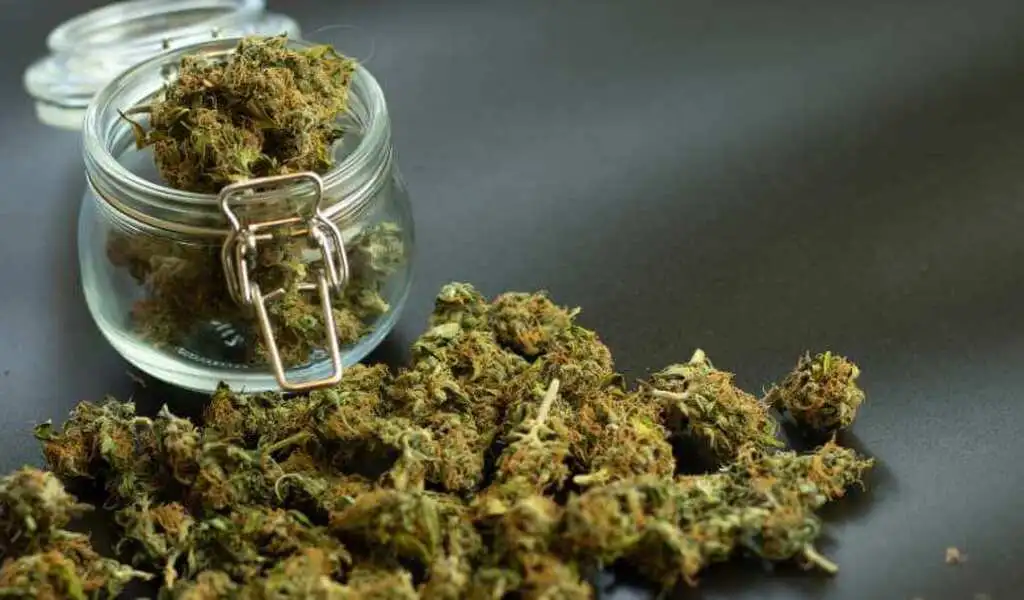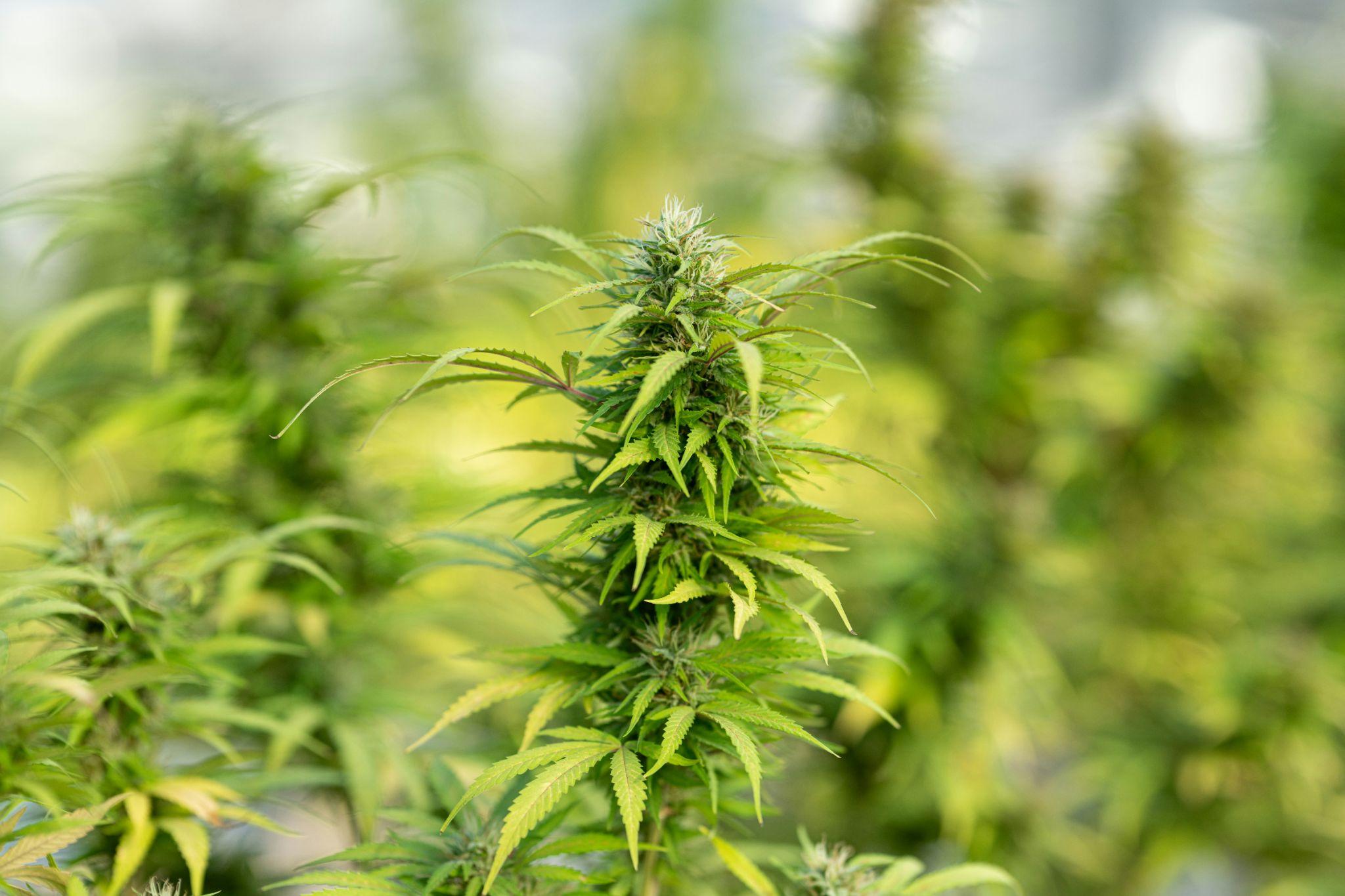Health
What is THCA? Hop On Hemp’s Newest Trend

The world of cannabis and hemp is ever-evolving, with new cannabinoids coming into the spotlight, offering unique experiences and benefits.
One such compound that has recently garnered attention is THCA, a precursor to the well-known psychoactive compound THC. This burgeoning interest isn’t without reason. But THCA products come in different shapes and sizes–and more importantly, they come bearing different effects.
Let’s take a closer look at THCA in itself, its potential benefits, and the different types of THCAA products available on the market today.
Understanding THCA: A Closer Look
Tetrahydrocannabinolic acid, or THCA, is best known as the precursor to THC, or the compound that THC originates from. But this cannabinoid is much more than just THC’s parent, it comes with its own set of effects and benefits.
Although THCA has not been studied much, preliminary research suggests it may have promising capabilities in several wellness fields, from neuroprotective properties to anti-inflammation benefits. While this compound shows potential, however, more research is needed to evaluate the full length of its capabilities.
In its raw form, THCA is non-psychoactive, meaning it does not get you high. This is due to its chemical composition: THCA has an additional carboxyl group, rendering it unable to bind with CB1 receptors in the body.
Once it’s heated up, or decarboxylated, however, THCA loses that additional carboxyl group and transforms into THC– AKA, that buzzy compound cannabis is known and beloved for all over the world!

Decarboxylation: The Science Behind the Transformation
Decarboxylation is a fascinating process, involving not just the application of heat but also the careful control of temperature to ensure the effective conversion of THCA into THC without degrading the desired cannabinoids and terpenes.
This process can be achieved through various methods, including baking, smoking, or vaporizing, each with its own efficiency and effect on the final product’s potency and flavor profile.
In short, when you smoke or vape THCA, you exert heat on it. This heat essentially burns off that extra carboxyl group mentioned above and transforms your raw THCA into fully cooked THC. Think of that next time you spark up a fat joint!
Drug Test Detection: Navigating the Complexities
THCA can potentially show up on a drug test, particularly those designed to detect the presence of THC and its metabolites.
While THCA itself is not the target of most drug tests, it can convert into THC through decarboxylation.
Since THC is the psychoactive compound that drug tests typically look for, the presence of THCA might contribute to a positive test result under certain conditions, especially when turned to THC.
Standard drug tests, including urine, blood, saliva, and hair tests, are designed to detect THC or its main metabolite, THC-COOH (11-nor-delta9-tetrahydrocannabinol-9-carboxylic acid), rather than THCA. However, if the THCA in a sample were to decarboxylate into THC during the testing process or if the individual had consumed decarboxylated cannabis products, this could lead to a positive test result for THC.
Obviously, once you spark up your THCA and it transforms into THC, it will trigger a positive drug test, as drug tests search for THC metabolites in the system. If you stick to raw THCA, however, your chances may be lower. Just not zero.
It’s important to note that the sensitivity and specificity of drug tests can vary, as can the metabolisms of individuals, which affects how long THC and its metabolites stay in the system. For those concerned about passing a drug test, it’s advisable to avoid cannabis products or to be aware of the detection windows of these substances in the body.

Federal and State Legality: A Legal Puzzle
The legal landscape for THCA is a mosaic of federal and state regulations. At the federal level, the 2018 Farm Bill legalized hemp-derived cannabinoids, provided they contain less than 0.3% THC.
States vary widely in their treatment of cannabis and its derivatives, with some allowing broader use and others maintaining strict prohibitions. This patchwork of laws creates a challenging environment for consumers, producers, and retailers navigating the legality of THCA products.
While federally legal, hemp-derived THCA products may not be legal in your state. It’s always advisable to do some research on your local legislation before purchasing or using any THCA products.
Safe Consumption: Ensuring Quality and Purity
Cannabinoids such as THCA are safe to consume as long as they’re sourced from reputable manufacturers. Never buy a hemp-derived cannabinoid product without first verifying its lab results. These should be legitimate, third-party lab results that are freely available for consumers to view before and after purchasing a hemp product.
Because the hemp business has boomed exponentially in the past few years, some sketchy retailers have popped up. It’s up to you as a consumer to do your research and find brands that reach your standards for quality, purity, and safety.
Such transparency is crucial in ensuring the safety and efficacy of THCA products.
The Surge in Popularity: THCA’s Unique Appeal
THCA’s rising popularity can be attributed to its dual nature.
In its raw form, it offers therapeutic benefits without psychoactivity, appealing to those seeking relief without impairment. The possibility of converting to THC through decarboxylation adds a layer of versatility, attracting a broader audience interested in the full spectrum of cannabis experiences, from medical to recreational.
Though THCA can be used as both a psychoactive or a non-psychoactive compound, the latter is much more popular. This is especially true because, while the Farm Bill prohibits hemp products from containing more than 0.3% THC, it doesn’t mention THCA, making it a sort of legal loophole for acquiring the full psychoactive effects of cannabis while staying within the law.

THCA Products and Effects: Exploring the Diversity
We’ve already mentioned that THCA can be used as a psychoactive or non-psychoactive. But how do you know which products can and cannot give you the effects you desire? Depending on what kind of THCA product you get, it can have different benefits.
THCA Gummies
THCA gummies are a popular, discreet, and convenient way to consume THCA.
Because the process for making or consuming gummies does not involve decarboxylation, THCA remains in its non-psychoactive state in this (delicious) form, providing a method for consumers to explore its potential health benefits without experiencing a high. These edibles are ideal for those seeking THCA’s wellness effects in a controlled dosage form.
THCA Vapes
Vaping THCA introduces a method of consumption that involves heating without combustion, leading to decarboxylation. This process converts THCA to THC, offering a quick onset of effects. Vapes appeal to those looking for the immediate psychoactive effects of THC with the convenience and discretion of a vape pen or cartridge.
THCA Flower
The THCA content in cannabis flower is of particular interest to those searching for that old-school high. When smoked or vaporized, the flower undergoes decarboxylation, converting THCA to THC and activating its psychoactive effects.
This form allows for a traditional consumption method, appealing to cannabis enthusiasts who appreciate the natural terpene profile, aromas and flavors, and the holistic effects of the plant.

Beyond THCA: A Comparison with Other Cannabinoids
THCA’s unique position as a non-psychoactive precursor to THC sets it apart from other cannabinoids like Delta 8, Delta
9, and Delta 10 THC.
While these compounds offer their own range of effects and legal statuses, THCA provides a unique bridge between the non-psychoactive and psychoactive worlds of cannabis.
Its ability to offer therapeutic benefits without intoxication, along with the potential for psychoactive effects through decarboxylation, makes it a versatile and appealing option for a wide range of users.
In its psychoactive state, THCA becomes THC, otherwise known as Delta 9. Although Delta 8 and Delta 10 are other forms of tetrahydrocannabinol, they’re both much milder than Delta 9 (and therefore THCA), with Delta 8 being about 50% as strong as Delta 9 and Delta 10 being around 25% as strong.
In sum, THCA stands out as a compelling component of the cannabis plant, offering a rich tapestry of potential effects, benefits, and applications.
As the cannabis industry continues to evolve, the exploration of cannabinoids like THCA will undoubtedly play a crucial role in shaping the future of cannabis consumption, therapeutic applications, and legal considerations. With its unique properties and growing popularity, THCA is indeed a trend worth watching and an area ripe for further research and exploration.
THCA’s Place in Cannabis Evolution
The fascination with THCA is a testament to the ongoing evolution of the cannabis industry and its growing acceptance within societal and medical contexts.
THCA embodies the complex interplay between cannabis science, legislation, and consumer culture, serving as a bridge between traditional cannabis use and the burgeoning field of cannabinoid therapy.
Its ability to exist both as a non-psychoactive agent and as a precursor to the well-known psychoactive THC illustrates the dynamic nature of cannabis compounds and their multifaceted roles in both recreational and medicinal arenas.
The Future of THCA and Cannabinoid Research
As we venture further into understanding THCA and other cannabinoids, the potential for groundbreaking therapeutic applications continues to unfold.
The scientific community’s growing interest in the pharmacological properties of cannabinoids promises to usher in a new era of cannabinoid-based therapies, potentially transforming our approach to a myriad of health conditions and diseases.
With continued research and development, the nuanced benefits of THCA could be more fully understood, paving the way for innovative treatments that leverage its unique properties.

Concluding Thoughts on THCA’s Rising Trend
THCA represents more than just a new trend in the hemp and cannabis markets; it signifies a deeper exploration into the potential of the cannabis plant beyond its psychoactive components.
As consumers, scientists, and policymakers navigate the complexities of cannabis regulation and application, THCA stands as a symbol of the potential for cannabinoids to impact a broad spectrum of societal, legal, and health-related fields.
Whether through its therapeutic benefits, its transformation into THC, or its contribution to the legal discourse surrounding cannabis, THCA is undoubtedly a compound of interest that will continue to captivate and challenge our understanding of hemp’s possibilities.
As we look toward the future, the exploration of THCA and its counterparts will likely play a significant role in shaping the landscape of cannabis and cannabinoid research, application, and acceptance.
SEE ALSO: CPR Proficiency: A Critical Skill for Health and Safety
Health
Report Causes Pfizer Stock to Climb Approximately $1 Billion Acquired by Starboard

(VOR News) – According to a rumor that activist investor Pfizer Starboard Value has taken a holding in the struggling pharmaceutical business that is expected to be worth around one billion dollars, the stock of Pfizer (PFE) is on the increase in premarket trading on Monday.
This comes after the report was made public. The report was made available to the general public following this. Starboard Value was successful in moving forward with the acquisition of the position.
Starboard is said to have approached Ian Read, a former chief executive officer of Pfizer, and Frank D’Amelio, a former chief financial officer, in order to seek assistance with its goals of boosting the performance of the company, according to the Wall Street Journal. Read and D’Amelio are both former Pfizer executives.
The purpose of this is to facilitate the accomplishment of its objectives, which include enhancing the overall performance of the firm.
In their previous jobs, D’Amelio and Read were chief financial officers.
It is stated in the report that the hedge fund is of the opinion that Pfizer, which is currently being managed by Albert Bourla, who succeeded Read as Chief Executive Officer (CEO) in 2019, does not demonstrate the same level of mergers and acquisitions (M&A) discipline that Read did. Bourla took over for Read in 2019. Read was succeeded by Bourla in the year 2019.
Pfizer, a multinational pharmaceutical conglomerate, has made substantial investments in the acquisition of more companies that are involved in the research and development of cancer medicines.
These businesses have been acquired for billions of dollars. The biotechnology company Seagen, which was acquired by Pfizer in the previous year for a price of $43 billion, is included in this category. One of the businesses that can be classified as belonging to this category is Seagen.
In spite of the fact that the S&P 500 Index experienced a 21% increase in 2024.
No major trading occurred in Pfizer stock that year.
Due to the fact that the demand for Pfizer’s COVID-19 vaccines fell after the firm reached its pandemic peak in 2021, the share price of the corporation has decreased by over fifty percent since that time.
This drop has occurred ever since the company’s shares reached their maximum peak, which was during the time that this decline occurred. Not only have they not changed at all, but they have also remained essentially stable. This is in contrast to the S&P 500, which has gained 21% since the beginning of this year.
Recently, the corporation was forced to take a hit when it decided to recall all of the sickle cell illness medications that it had distributed all over the world.
Fears that the prescription could lead patients to experience severe agony and possibly even death were the impetus for the decision to recall the product. In spite of the fact that Pfizer’s stock is increasing by almost three percent as a result of the news that followed the company’s decision, this is the circumstance that has come about.
SOURCE: IPN
SEE ALSO:
New Study Reveals Drinking Soda Pop Increases the Risk of Stroke
The Mpox Vaccine’s Protection Decreases Within a Year; Booster Requirements
Health
New Study Reveals Drinking Soda Pop Increases the Risk of Stroke

A recent report from global research indicates that excessive consumption of coffee or soda pop is associated with an increased risk of stroke, although the intake of black and green tea is correlated with a reduced risk. Excessive consumption of soda pop or coffee warrants caution!
Recent research indicates that it may substantially elevate the risk of stroke.
Consuming four cups of coffee daily elevates the risk of stroke, according to studies, although ingesting 3-4 cups of black or green tea daily typically offers protection against stroke. Additionally, consume more coffee; it may reduce your risk of mortality.
Recent findings from global research studies co-led by the University of Galway and McMaster University, alongside an international consortium of stroke researchers, indicate that soda, encompassing both sugar-sweetened and artificially sweetened variants such as diet or zero sugar, is associated with a 22 percent heightened risk of stroke. The risk escalated significantly with the consumption of two or more of these beverages daily.
Stroke Risk Fizzy Drinks and Soda Pop
The correlation between fizzy drinks consumption and stroke risk was most pronounced in Europe, the Middle East, Africa, and South America. Women exhibit the most elevated risk of stroke from bleeding (intracranial hemorrhage) associated with fruit juice beverages. Consuming over 7 cups of water daily diminishes the likelihood of stroke due to a clot.
Researchers observed that numerous items advertised as fruit juice are derived from concentrates and have added sugars and preservatives, potentially negating the advantages often associated with fresh fruit and instead elevating stroke risk.
Fruit juice beverages were associated with a 37 percent heightened risk of stroke resulting from bleeding (intracranial hemorrhage). Consuming two of these beverages daily increases the risk thrice.
Consuming over four cups of coffee daily elevates the risk of stroke by 37 percent, although lower consumption levels do not correlate with stroke risk. Conversely, tea consumption was associated with an 18-20 percent reduction in stroke risk. Additionally, consuming 3-4 cups daily of black tea, such as Breakfast and Earl Grey varieties, excluding green and herbal teas, was associated with a 29 percent reduced risk of stroke.
Consuming 3-4 cups of green tea daily was associated with a 27 percent reduction in stroke risk. Notably, the addition of milk may diminish or inhibit the advantageous effects of antioxidants present in tea. The lower risk of stroke associated with tea consumption was negated for individuals who added milk.
Disclaimer: This article is intended solely for informational reasons and should not be considered a replacement for professional medical counsel. Consistently consult your physician regarding any inquiries pertaining to a medical problem.
Related News:
Starbucks Faces Sales Decline Amid Price Fatigue and Rising Competition
Starbucks Faces Sales Decline Amid Price Fatigue and Rising Competition
Health
Following a Diagnosis of Breast Cancer, What Else Should You Know?

(VOR News) – Even though breast cancer affects one in eight American women, receiving a diagnosis can make a woman feel isolated.
Experts in breast cancer from the American College of Physicians (ACS) advise patients on how to manage their disease so that they may better cope with this awful information.
First, the kind and stage of breast cancer dictates the course of your care.
In addition to immunotherapy and chemotherapy, there are various surgical options available for the treatment of breast cancer.
Women of African descent are disproportionately affected by triple-negative breast cancer, an extremely aggressive form of the disease that has never proven easy to treat.
According to the American Cancer Society, pembrolizumab (Keytruda), an immunotherapy, has been shown to be helpful when combined with chemotherapy and is currently the recommended course of treatment for certain combinations of triple-negative breast cancer.
In her presentation, Dr. Katharine Yao said, “It’s really important that the patient and physician discuss the patient’s preferences and values when deciding what type of treatment to pursue and that they have an honest, individualized discussion with their care team.”
She is currently responsible for developing breast cancer treatment recommendations for more than 575 hospitals and institutions nationwide in her role as chair of the American College of Surgeons’ National Accreditation Program for Breast Institutions (NAPBC).
Yao, vice chair of research at Endeavor Health NorthShore Hospitals in New York, pointed out that each decision made about a patient’s treatment plan should take her preferences and diagnosis into consideration.
She ought to think about whether she would prefer a mastectomy—a surgical procedure that involves removing the entire breast with or without reconstruction—or a lumpectomy, which involves a surgical procedure that spares part of the breast tissue.
She stated that “the breast cancer you have may be very different from the breast cancer you hear about in your neighbor, colleague, or friend” in a press release issued by the American Cancer Society (ACS).
“Consider that while discussing breast cancer with others.”
Throughout your journey, it is critical that you look after your emotional health because having breast cancer may have a detrimental impact on your mental health.
“Getting a cancer diagnosis does not mean that everything in your life stops to be normal.” Director of the Fellowship in the Diseases of the Breast program at the Winthrop P. Rockefeller Cancer Institute at the University of Arkansas and state head of the American Cancer Society Commission on Cancer for Arkansas, Dr. Daniela Ochoa She thinks adding the burden of a cancer diagnosis and treatment to all the other pressures in life may be taxing.
“Managing stress and emotional health is vital component of a treatment plan.”
Ochoa recommends clinically trained psychologists and social workers who have assisted people in coping with cancer to anyone receiving treatment. Learning coping techniques might also be facilitated by joining cancer support groups or cancer wellness initiatives.
Breast cancer specialists say your care team is crucial.
The American Cancer Society (ACS) defines comprehensive care as having support at every stage of the procedure from surgeons, oncologists, patient navigators, nurses, social workers, psychologists, and other specialists.
After receiving a breast cancer diagnosis, women should see a surgeon or medical oncologist to explore their options; nevertheless, treatment shouldn’t be discontinued after just one appointment or after surgery is over.
Additionally, you can ask trustworthy friends or family members to accompany you to appointments and aid you with research or notes. They could serve as a network of support for you.
Yao stated in his talk that “one of the most important things is that patients should search out a team they have confidence in, that they trust will have their back when they need it, and a team they feel they can get access to and that will help them when they are in need.”
SOURCE: MP
SEE ALSO:
The Mpox Vaccine’s Protection Decreases Within a Year; Booster Requirements
COVID was a Paradigm Shift in Health Policymaking, Says Commissioner Stella Kyriakides.
Rwanda Reports 8 Deaths Linked To Ebola-Like Marburg Virus Days After It Declared An Outbreak
-

 News3 years ago
News3 years agoLet’s Know About Ultra High Net Worth Individual
-
Entertainment2 years ago
Mabelle Prior: The Voice of Hope, Resilience, and Diversity Inspiring Generations
-

 Health3 years ago
Health3 years agoHow Much Ivermectin Should You Take?
-

 Tech2 years ago
Tech2 years agoTop Forex Brokers of 2023: Reviews and Analysis for Successful Trading
-

 Lifestyles2 years ago
Lifestyles2 years agoAries Soulmate Signs
-

 Movies2 years ago
Movies2 years agoWhat Should I Do If Disney Plus Keeps Logging Me Out of TV?
-

 Health3 years ago
Health3 years agoCan I Buy Ivermectin Without A Prescription in the USA?
-

 Learning2 years ago
Learning2 years agoVirtual Numbers: What Are They For?
